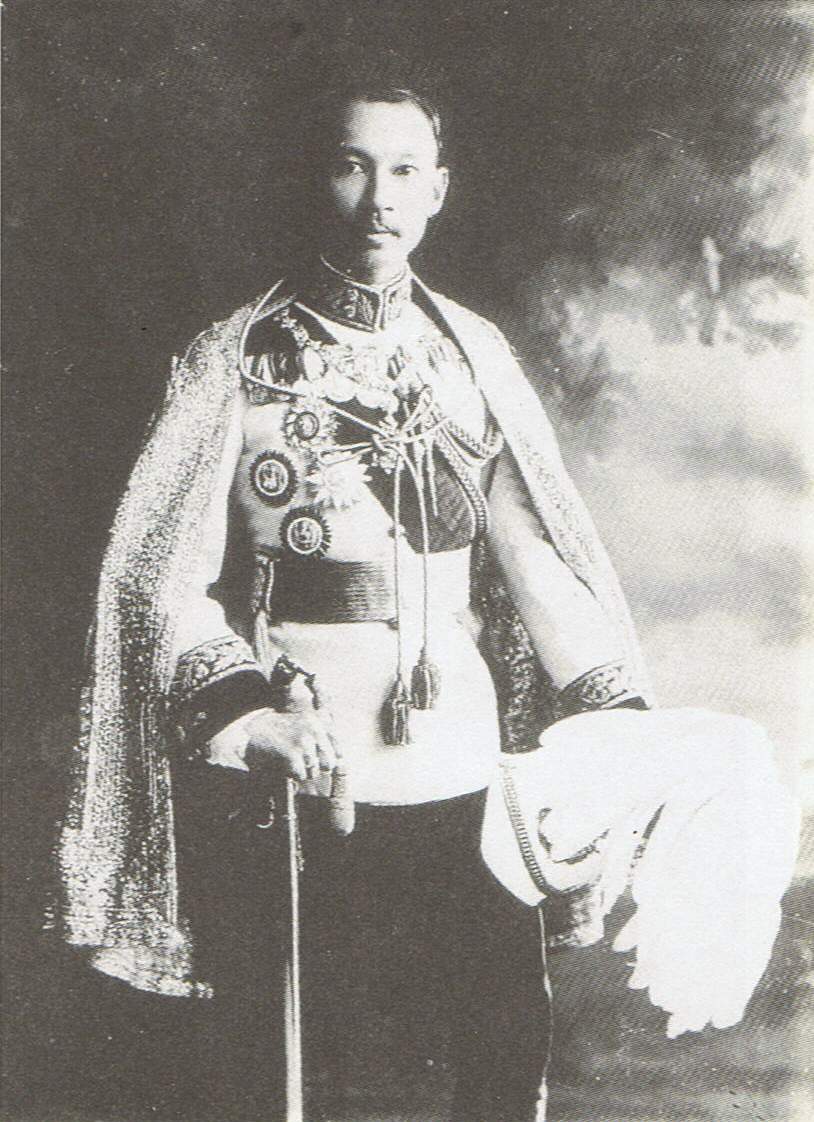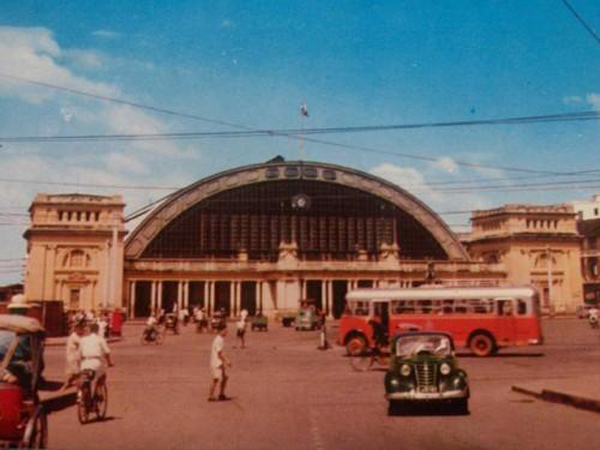|
Pak Nam Pho Railway Station
Pak Nam Pho railway station is a railway station in the Pak Nam Pho Sub-district, Nakhon Sawan City, Nakhon Sawan. It is 250.559 km from Bangkok railway station and is a class 1 railway station. It is on the Northern Line of the State Railway of Thailand. The station opened on 31 October 1905 as part of the Northern Line extension from Lopburi to Pak Nam Pho. The line continued to Phitsanulok in 1908. Originally, this was the railway station for Nakhon Sawan City as passengers would alight here and cross the Chao Phraya River The Chao Phraya River is the major river in Thailand, with its low alluvial plain forming the centre of the country. It flows through Bangkok and then into the Gulf of Thailand. Etymology Written evidence of the river being referred to by the ... to reach the city, however its main purpose was removed as the new railway station built at Nong Pling replaced its role. Today, the station acts as a rail yard, a railway maintenance centre, and a junct ... [...More Info...] [...Related Items...] OR: [Wikipedia] [Google] [Baidu] |
State Railway Of Thailand
The State Railway of Thailand (SRT) (, abbrev. รฟท., ) is the state-owned rail operator under the jurisdiction of the Ministry of Transport (Thailand), Ministry of Transport in Thailand. History The SRT was founded as the Royal State Railways of Siam (RSR) in 1890. Chulalongkorn, King Chulalongkorn ordered the Department of Railways to be set up under the Department of Public Works and Town and Country Planning. Construction of the Bangkok railway station, Bangkok-Ayutthaya railway station, Ayutthaya railway (), the first part of the Northern Line, was started in 1890 and inaugurated on 26 March 1897. The Thon Buri railway station, Thon Buri-Phetchaburi railway station, Phetchaburi line (), later the Southern Line, was opened on 19 June 1903. The first railway commander of the RSR was Purachatra Jayakara, Prince Purachatra Jayakara, Prince of Kamphaengphet. The Northern Line was originally built as , but in September 1919 it was decided to standardize on and the Northern ... [...More Info...] [...Related Items...] OR: [Wikipedia] [Google] [Baidu] |
Nakhon Sawan Province
Nakhon Sawan (, , ) is one of Thailand's seventy-six provinces (''changwat''). It lies in lower northern Thailand, neighbouring the provinces of Kamphaeng Phet, Phichit, Phetchabun, Lopburi, Sing Buri, Chai Nat, Uthai Thani, and Tak (clockwise from north). Toponymy The word ''nakhon'' originates from the Sanskrit word ''nagara'' meaning 'city', and the word ''sawan'' from Sanskrit '' svarga'' meaning 'heaven'. Hence the name of the province literally means 'city of heaven' or 'heavenly city'. History Nakhon Sawan province was a city since Dvaravati era. While part of the Sukhothai Kingdom, it was called '' Mueang'' Phra Bang, the southern frontier city of Sukhothai. Later within the Ayutthaya kingdom it was an important trade center because of its location at the two major rivers from the north. It also was the common meeting point of Burmese troops before moving to attack Ayutthaya. In the reign of King Taksin the Great, Phra Bang became a Siamese military base to ... [...More Info...] [...Related Items...] OR: [Wikipedia] [Google] [Baidu] |
Bangkok Railway Station
Bangkok (Hua Lamphong) railway station (, ) is a list of railway stations in Thailand, railway station in Pathum Wan district, Pathum Wan, the former central station, central passenger terminal in Bangkok and the former railway hub of Thailand. It is in the center of the city in the Pathum Wan district, and is operated by the State Railway of Thailand (SRT). Long distance trains moved to the new central station at Krung Thep Aphiwat Central Terminal in 2023. Naming The station was officially referred to by the State Railway of Thailand as Bangkok railway station or ''Sathani Rotfai Krung Thep'' (สถานีรถไฟกรุงเทพ) in Thai. Hua Lamphong () was originally the informal name of the station, used by locals, tourist guides and the public press. In all documents published by the State Railway of Thailand (such as train tickets, timetables, and tour pamphlets) the station is uniformly transcribed as Krungthep (กรุงเทพ) in Thai. As of 19 Janua ... [...More Info...] [...Related Items...] OR: [Wikipedia] [Google] [Baidu] |
Northern Line (Thailand)
The Northern Line () is a railway line in Thailand, running between the capital Bangkok (at Krung Thep Aphiwat Central Terminal) and the northern city of Chiang Mai ( Chiang Mai railway station). It is the second longest railway line in Thailand at long, has 130 operational stations and halts, and is operated by the State Railway of Thailand. The line first opened in 1896. Major cities served by the line include Bangkok, Ayutthaya, Nakhon Sawan, Phitsanulok, Lampang, and Chiang Mai. The line's operations were severely affected during World War II. Since January 2023, long-distance (Special Express, Express and Rapid) trains terminated at Krung Thep Aphiwat Central Terminal in Bangkok replacing Hua Lamphong station. A new 323 kilometer-long branch line, from Den Chai to the Lao border at Chiang Khong, is under construction and is expected to open in 2028. History Timeline Name changes Infrastructure The Northern Line is entirely single track, except at stations. ... [...More Info...] [...Related Items...] OR: [Wikipedia] [Google] [Baidu] |
Lopburi Railway Station
Lopburi railway station is a class 1 railway station in the centre of Lopburi, Thailand, located away from Bangkok Station. It is a terminus for commuter train services on the Northern Line. Two large golden monkey sculptures are located on the platforms as the monkey is the symbol of Lopburi. The opposite side of the station building is an important archaeological site of Lopburi, Wat Phra Sri Rattana Mahathat. Lopburi is the current northern end of the double-track section from Bangkok and further double tracking on the line has begun construction between Lopburi – Pak Nam Pho. However, to the north of the station where the tracks run adjacent to the Phra Prang Sam Yot, the double tracking was not possible due to the predicted detrimental effects of increased rail traffic on the historical site. As a result, a bypass route was constructed between Ban Klap and Khok Kathiam railway stations. A new Lopburi 2 railway station Lopburi (, , ) is the capital city of ... [...More Info...] [...Related Items...] OR: [Wikipedia] [Google] [Baidu] |
Chao Phraya River
The Chao Phraya River is the major river in Thailand, with its low alluvial plain forming the centre of the country. It flows through Bangkok and then into the Gulf of Thailand. Etymology Written evidence of the river being referred to by the name ''Chao Phraya'' dates only to the reign of King Mongkut (Rama IV, 1850–1868). It is unknown what name, if any at all, was used for the river in older times. The river was likely known simply by the Thai word for 'river', (), and foreign documents and maps, especially by Europeans visiting during the Ayutthaya period, usually named the river the ''Menam''. The name Chao Phraya likely comes from (), an alternative name, documented from around 1660 in the reign of King Narai, of the settlement that is now Samut Prakan. Historian Praphat Chuvichean suggests that the name, which is a Thai noble titles, title of nobility, originated from the story of two Khmer idols being unearthed in 1498 at the settlement that was by the mouth of the ... [...More Info...] [...Related Items...] OR: [Wikipedia] [Google] [Baidu] |




